Over the last five years, increasing fear of wheat’s proteins has threatened to restructure bread baking in America.
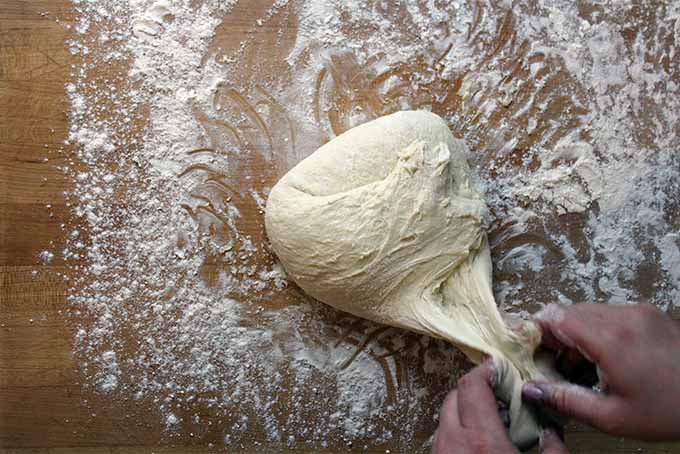
As gluten has quickly risen to fame, unfortunately it is primarily referred to in negative terms – causing emerging methods of baking to fall flat.
In order to restore faithful gluten to its proper kitchen glory, it is time to break down the science of this chain of amino acids into more easily digestible terms.
So What Exactly is Gluten?
This substance is made up of two proteins: glutanin and gliadin. And it is present in three grains: wheat, barley, and rye.
When flour is dry, these proteins are at rest, raveled up in tightly bound coils. Once hydrated, these coils unravel into long strands. As hydrated flour is worked, the strands interlock with one another into a large net.
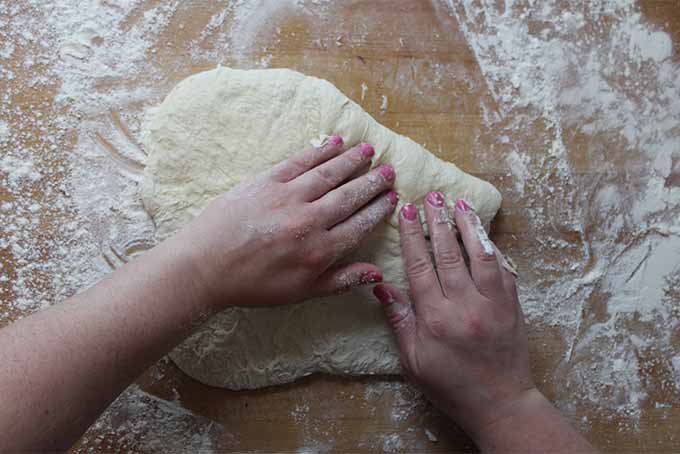
When making tender baked goods like cake or scones, too much development of interlocking strands can ruin the texture. The result will be tough and undesirable, which is why many recipes warn against over mixing.
Cake flour is a type of wheat flour where some of the proteins have been removed, decreasing the strength of the net.
When making a yeast bread, however, the strong net is responsible for the final loaf’s structure. The proteins can be unraveled and interlocked through either kneading or fermentation.

As yeast eats its way through the sugar and starch, it releases carbon dioxide. The gluten net traps this gas to raise the dough.
Bread flour is a type of wheat flour with extra proteins added in, to assist in developing a stronger net. This type of flour is not necessary for making every type of dough, but it is very helpful when making dough out of a combination of wheat and other non-glutinous grains.
How is it Formed?
In order to develop the protein net in bread, two phases must occur – the strands must be unraveled, and then they must interlock.
Kneading accomplishes both of these steps in a relatively short amount of time. The friction creates heat that unravels the strands, and the folds interlock.
Kneading can be accomplished by hand with old fashioned muscle power, or with a powerful stand mixer using a dough hook.
If you are going to go the automated route, make sure that your machine has plenty of power. A cheaper stand mixer will not be able to routinely cope with the stresses demanded by a thick bread or pizza dough the way a bread machine might.
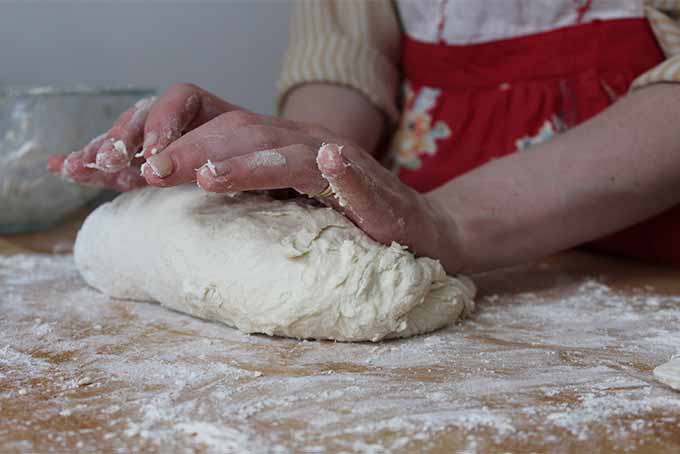
Fermentation is another method of gluten formation.
The yeast and enzymes unravel and break down the coils over the course of twelve to eighteen hours. When fermentation is finished, just a few folds are needed to interlock and shape the dough. This is how sourdough breads are made.
Full of Personality
Gluten has a strong personality – it will let you know what it wants and needs!
I sometimes envision it as a toddler, a bit stubborn and resistant to change, but a short rest can set him back on track.
When kneading, he sometimes gets tired. The dough might feel tough to work, or it might tear with your turns. These are telltale signs that naptime has arrived.
Just step away for three to five minutes, then come back and try again. Once he has relaxed a bit, he’ll be ready to get back to work.
When rolling, he likes to be stretched equally in every direction. For every horizontal roll, a vertical roll must follow. Otherwise, after each pass of the rolling pin he’ll quickly spring back into place.
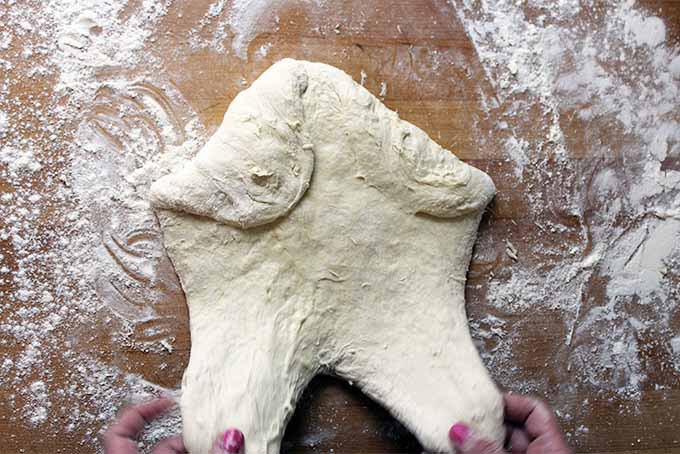
When shaping your bread, he likes to be slowly nudged into the right direction. Oftentimes, bread recipes will call for a pre-shape and then a final shape. This helps prepare “little Gluten” for what will ultimately be expected of him.
A well-kneaded and well-shaped dough will hold its shape once formed, rather than relaxing down into the work bench. Once in place, he’ll need one more nap before he’s ready for baking.
This final proof allows the yeast one last push to raise the dough, while also relaxing him so that he doesn’t tear once the final burst of steam and carbon dioxide push their way through the dough in the oven.
You would never take a tired toddler out to run errands without expecting exhausted resistance. The same is true of your gluten. But let him rest after every exertion and he will learn to obey your gentle guidance.
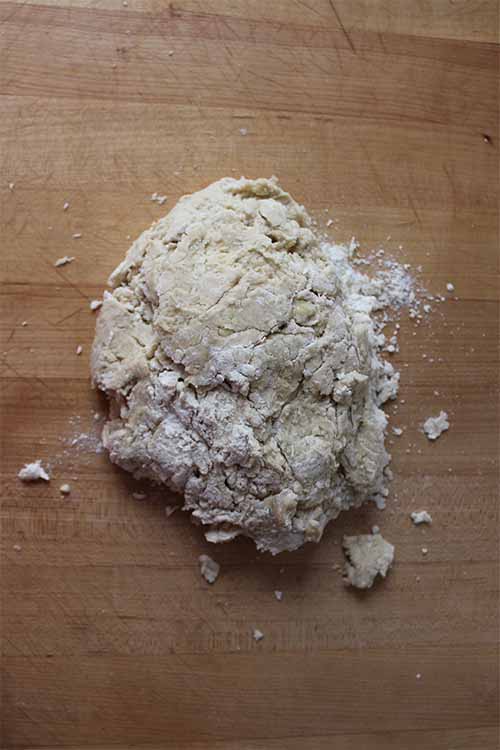
Tips
- When baking bread that calls only for white flour, all-purpose will do just fine. But if using a combination of non- or low-gluten grains or fibrous whole grains, the extra protein in bread flour will significantly improve the dough’s strength and texture.
- When making pie dough, scones, or cookies, be very careful to avoid over mixing. Too much formation will lead to tough results. For cakes – like this delicious strawberry layer cake, where tenderness is vital – low-protein cake flour is useful.
- When kneading and shaping dough, learn to listen to the gluten. When he tells you he’s tired, be sure to let him rest. Otherwise, he will break down and ruin your final results.
- Consider grinding your own flour at home using a variety of different whole grains. High speed commercial mills generate lots of heat, stipping out flavor and nutrients.
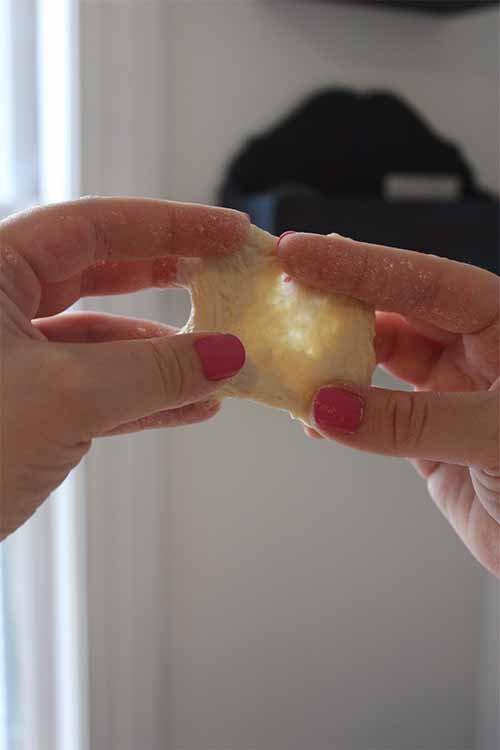
Despite the negative associations that have developed over the past few years, this remarkable amino chain remains a vital component in baking. Now that you know the important role he plays, you can better understand how to effectively knead and shape your bread dough.
Explore it for yourself! Get to know gluten through all of our different bread recipes.
Let us know in the comments if you have any additional questions about gluten, how it is formed, or how to decipher what it is telling you in your baking.
It’s time to bake some bread!
Photos by Kendall Vanderslice, © Ask the Experts, LLC. ALL RIGHTS RESERVED. See our TOS for more details.
About Kendall Vanderslice
Kendall’s love of food has taken her around the world. From baking muffins on a ship in West Africa and milking cows with Tanzanian Maasai, to hunting down the finest apfelstrudel in Austria, she continually seeks to understand the global impact of food. Kendall holds a BA in Anthropology from Wheaton College and an MLA in Gastronomy from Boston University, and has worked in the pastry departments of many of Boston’s top kitchens. Based in Somerville, Massachusetts, Kendall helps to run a small community supported bread bakery and writes about the intersection of food, faith, and culture on her personal blog, A Vanderslice of the Sweet Life.

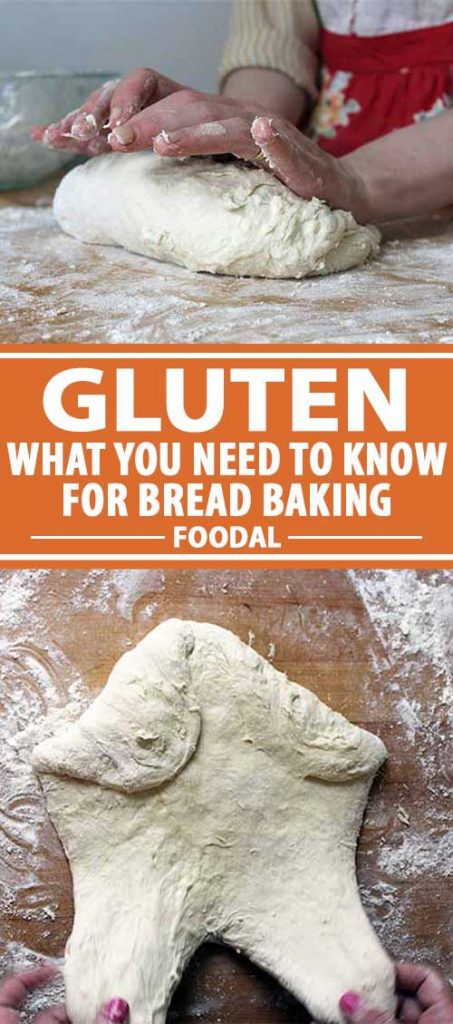

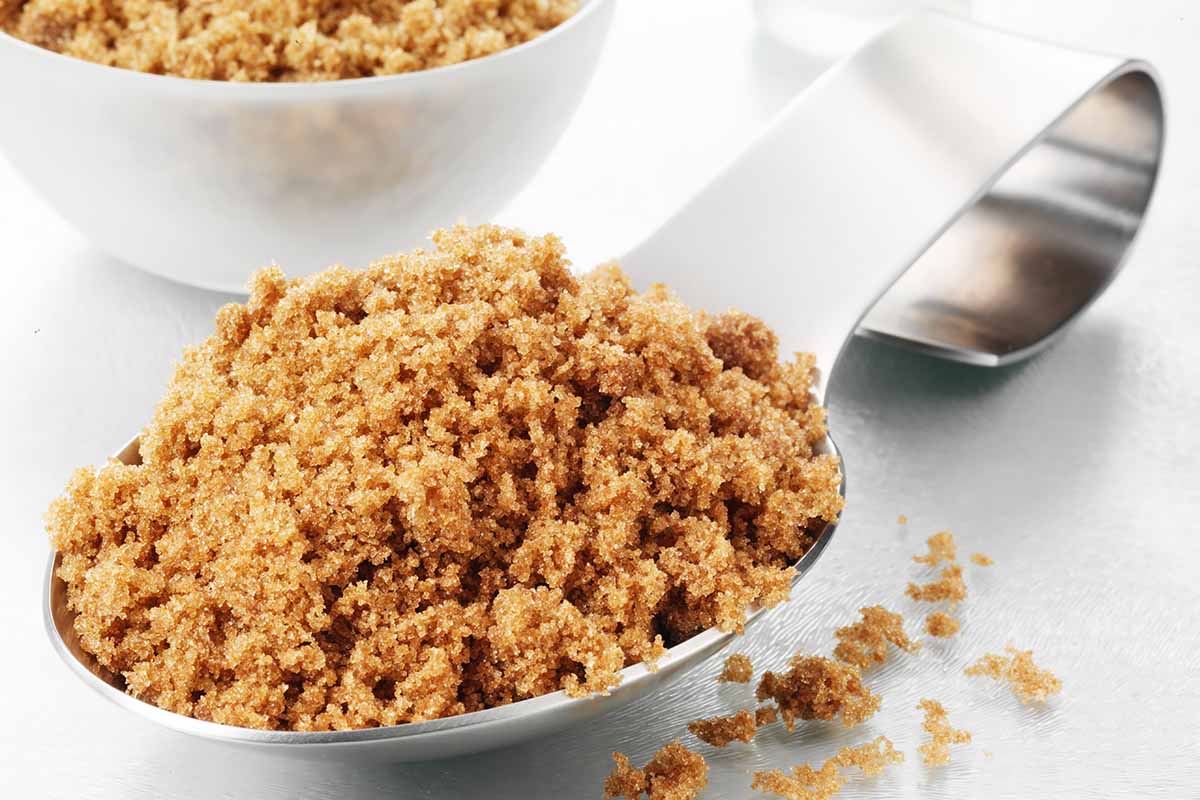
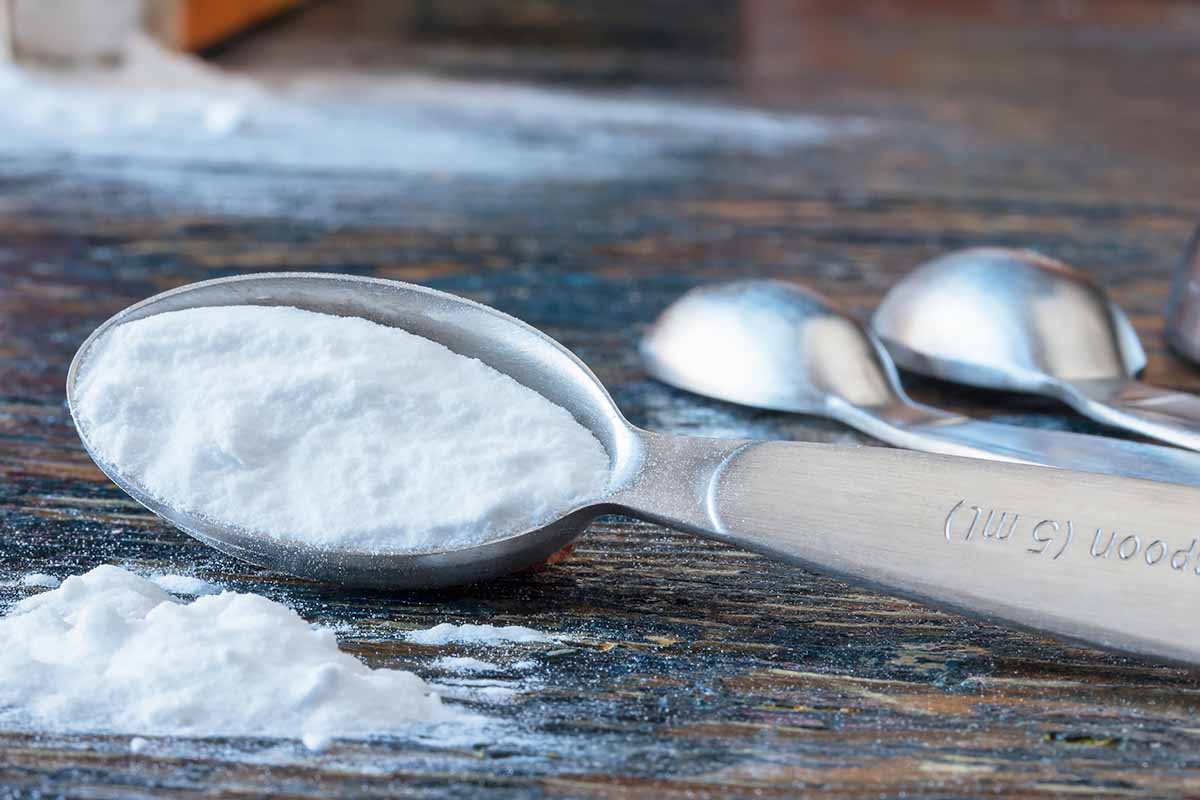
LOL, reading this and seeing the photos takes me back to my childhood. My grandmother (still living, God bless her), would always make a real production out of kneading and shaping the dough.
But my question is this, are people just saying that gluten is bad for you and self-diagnosing as gluten intolerant and saying those things beacuse it is a current trend, a fad, or is it really THAT bad for you? I admit, even I have started thinking about avoiding it in my food, as a sort of precaution, and it makes me question. Thank you in advance for your response
Hi 1Andy11, as The New Yorker article linked in the beginning of this article shows, the answer is complicated.
Celiacs Disease is an autoimmune disease that is absolutely a real issue — those with Celiacs are not able to digest gluten and their bodies create antibodies to attack it, making them sick whenever they eat it.
However there is little to no solid evidence that gluten intolerance exists in those without Celiacs. It is possible that modern methods of wheat processing render it more difficult to digest, in which case the issue is the wheat itself not the gluten within it. Most likely it is either a) a fad that people convince themselves they feel or b) those who cut out wheat in turn clean up their diet altogether and thus they feel better not because the gluten had been hurting them but because they are overall healthier.
Wheat has been the stable crop of human civilization for thousands of years, so I find it a bit difficult to swallow the idea that it could have lasted so long while being harmful to our health! As this article reveals, gluten is a fascinating protein and it is essential to the texture of bread and countless other baked goods. Instead of cutting it out altogether, look for minimally processed foods and unbleached flours made with high quality grains!
Gluten sensitivity was recently disproved. If you don’t have celiac disease there is no health benefits to specifically avoiding gluten.A whole industry has developed to prey on hypochondria and it frustrates me.Thank you for writing an article that doesn’t villainize gluten.
The gluten craze is up their with anti-vaccine people and climate change deniers as far as people totally not understanding science and just misrepresenting data. People can have an allergy to gluten in the same way they can have an allergy to peanut butter or shellfish. But there is this myth that there is ´degrees´ to the allergy. There isn´t … just like peanut butter, if you are not allergic to it, then you get no symptoms from an allergy. Gluten is not bad for you unless you are allergic to it, in which case it is very bad for you to the extent that you have major issues. But it is just horrible science when people talk about gluten like it ´gives me a belly ache´..
There isn’t a gluten allergy, and it’s not like peanut or shellfish allergies which are very real. There isn’t gluten sensitivity either. The study disproving gluten sensitivity showed no increase in digestive comfort with gluten rich foods. Gluten sensitivity is nothing more than misinformation and hypochondria fueled by the marketing practices of greedy corporations.